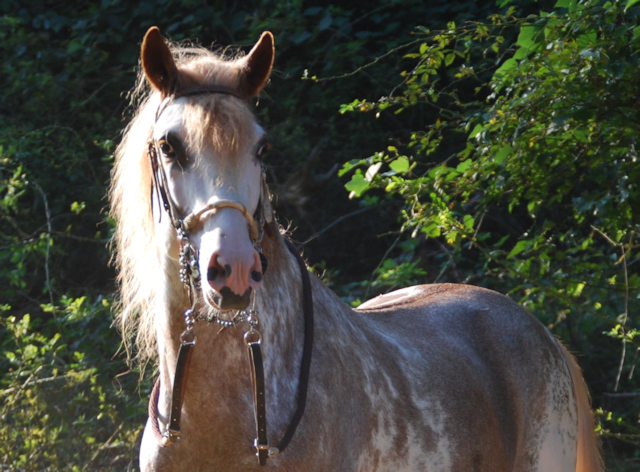Colorful and easy gaited horses can be traced back to at least to the time of the discovery of the new world, in fact far beyond that but the horses that we have come to know as Paso Fino and Paso Colombiano, those that are the genetic make up of the Pinto Paso Horse began with the discovery of the new world – or more accurately the second voyage to the new world. After discovering the new world to be horseless, Columbus selected twenty-five horses to take with him on his second voyage, these he settled in Santo Domingo. These horses were known for their hardiness and stamina, but most importantly for the comfortable saddle gait – a gait that was naturally transmitted to their offspring. These original horses along with others brought by later explorers combined to become
the foundation stock for remount stations of the Conquistador. Among the later arrivals were Cortez's horses; ship’s logs describe spotted markings that can only belong to sabino and tobiano pinto horses. True to it's heritage, the uniqueness of the pinto Paso Horse is in their color. Although countries of origin continue to breed out excessive white markings and pinto patterns, these traits have proven strong. With this strength and the dedication of a very few breeders, the Pinto Paso remains pure.
Early importers of Paso Fino and Paso Colombiano horses recognized the value of color, and imported what would become the foundation of the the Pinto Paso Horse in North America.. The tobiano pinto pattern could be found in Puertorican lines, the sabino pinto pattern is also found in Puertorican lines but sabino characteristics (irregularly edged, tall stocking in the rear, a few roan hairs and a wide blaze extending into the bottom lip) can be found in all strains of the Paso Fino. Both types of pintos were imported by early breeders but were limited by promotion of the "traditional" Paso Fino and Paso Colombiano horse.
Pinto Pasos have remained virtually untouched by current trends, fads and politics of the show ring. In their countries of origin the pinto marked horses are considered pleasure and family horses, not show horses. Pleasure breeders knew that it was important to continue raising a horse that would breed true to its heritage along with the ability to perform the many daily tasks that would be required. This has developed a horse that is smooth gaited, even-tempered and extremely versatile and beautiful – truly a horse that meets the demands of modern day riders.
PISAFLORES is a sabino pinto son of Dulce Sueno, and is a 1946 Champion in Puerto Rico
Island Grand Champion Fino Mare 1963, 1964, 1965 Jackeline was owned by Dr. Arnaldo Monroi





